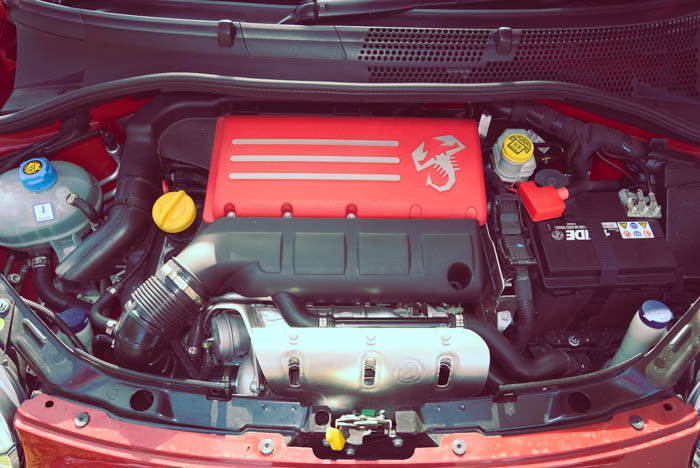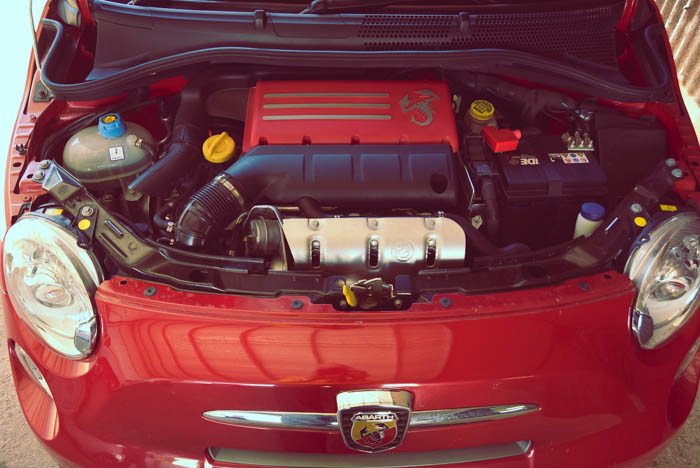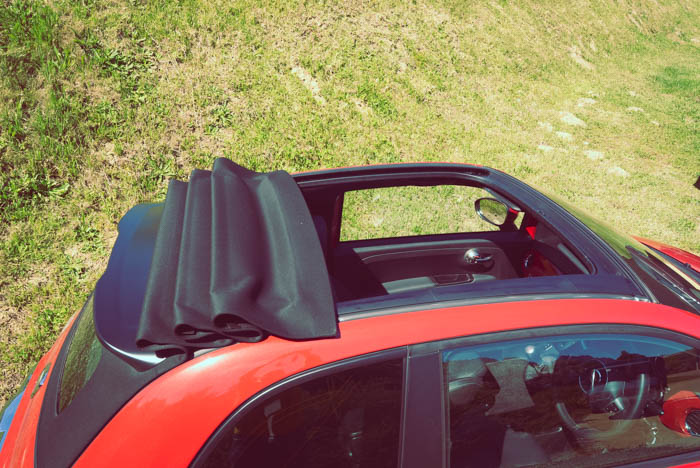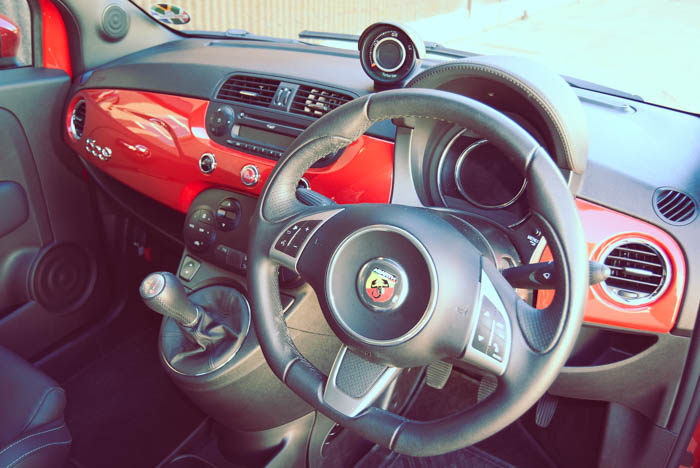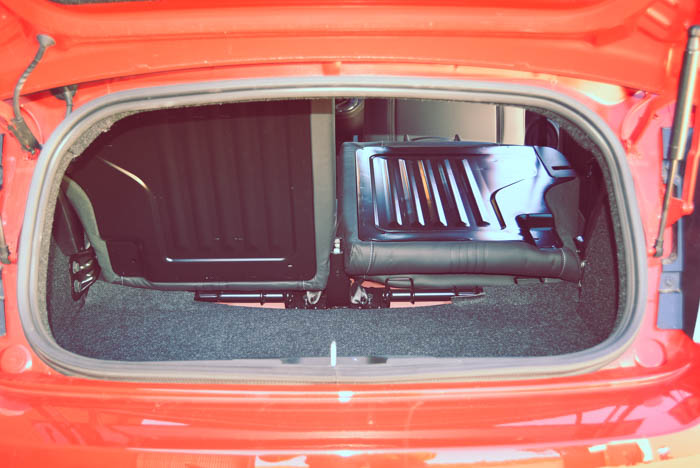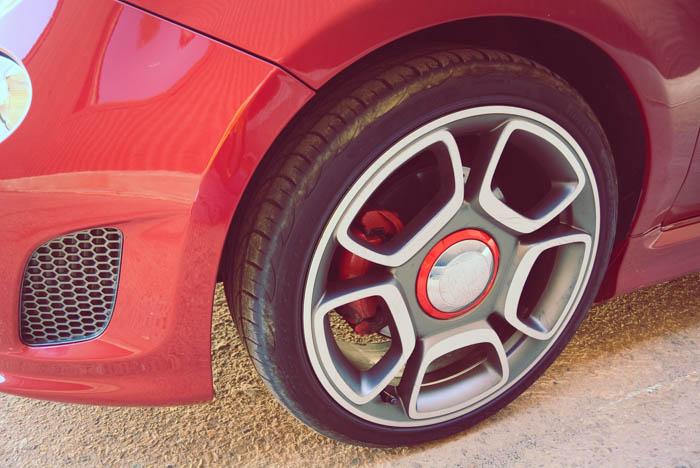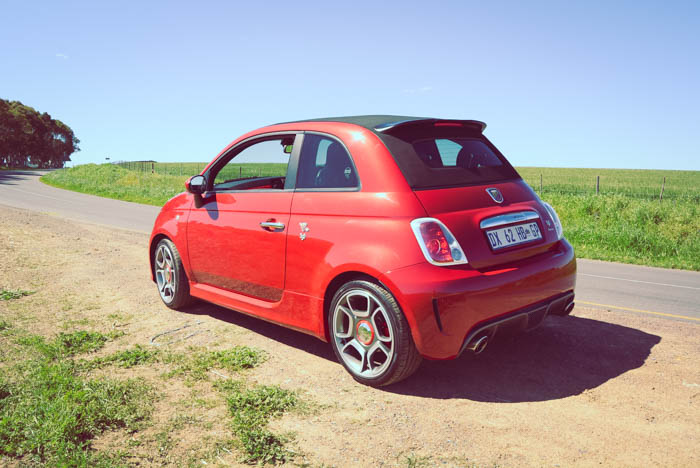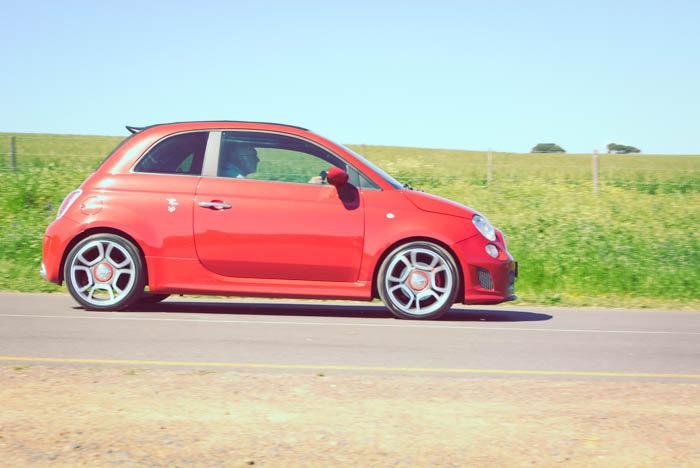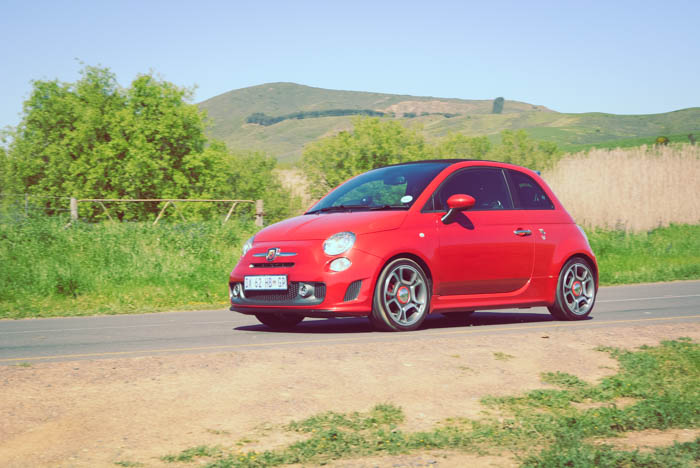
29 Sep ABARTH TIME
Coincidentally, thanks to the kind offices of the Fiat Chrysler Automobiles SA group, FMM currently has an Abarth 500C 1.4T 595 Turismo on short term loan and I recently had the privilege of using the car for a return trip from Cape Town to Port Elizabeth to research some old cars. Sparkling in its Red Cordolo Tri-coat metallic paint, the car certainly drew admiring glances everywhere it went – especially from owners of Fiat 500 models. This particular car was in 500C guise, which means it features a fully-retractable fabric roof offering either snug or al fresco motoring in equal measure.
Upgrades over the Fiat 500C upon which the Abarth is based include a more sporty suspension system featuring Koni shock absorbers with Frequency Selective Damping technology, and upgraded brakes with ventilated and perforated front discs. Other standard improvements consist of a new 7-inch TFT instrument cluster, leather upholstery, Xenon headlights and 17-inch alloys. This car is fitted with an optional 5-petal design, shod with 205/45 rubber.
The engine, too, is uprated, the turbocharged, twin-cam, 16-valve inline-four delivering 118 kW at 5 500r/min and a healthy 230 N.m of torque at 3 000. Gearbox is a five-speed manual (MTA auto is available) and the claimed benchmark 0-100 km/h time is 7,4 seconds and the top speed is 210 km/h. From outside, it sounds throaty through the twin exhausts. Official combined cycle fuel consumption is 5,4 litres/100 km.
Depending on the size of the front seat passengers, the Abarth is more a 2+2 than a four seater, but for those up front the seats are comfortable and supportive, hugging the torso. Boot space is a meagre 185 dm3 but with the split back seats folded down, space increases to 550 dm3.
Electric Dualdrive power steering has a Sport mode that allows the driver to exploit the car’s excellent handling characteristics to the full. For such a small car, the turning circle of 10,6 metres makes it less manoeuvrable than one would expect. The suspension is firm but without being harsh, so although the car bobs and wriggles over bumpier surfaces the effect does not jar the passengers. It can get tiring over time though.
My wife, Wendy, and I both enjoyed the car’s easy-going nature and sprightly performance. Only negatives are the placing of the handbrake right next to the (rather flimsy) driver’s seat height adjustment lever, and the too small sun visors. Over the 1 512 km round trip with air-con operating at all times, the Abarth achieved a real-world consumption of 7,78 litres/100 km that combined with the 35-litre fuel tank does necessitate frequent fill-ups.
Abarth prices start at R362 900 for the tin-top 500 manual reaching to R430 900 for the fabric-roof 500C automatic. A 3-year/100 000 km maintenance plan is included in the pricing. Abarth badging comes at a premium, but it is on par with competition and for enthusiasts and anyone looking to be a little different, it is an attractive proposition. MM
